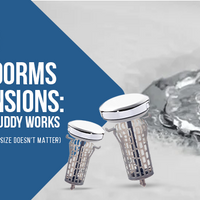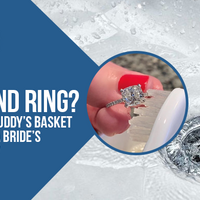Summary:
- Pet hair from baths mixes with soap to form dense clogs, causing slow drainage and odors.
- Brushing pets before bathing and using hair-specific drain catchers prevent fur buildup in pipes.
- Weekly maintenance, like baking soda and vinegar flushes, keeps drains clear on a budget.
- Tools like Drain Buddy Ultra Flo seamlessly trap pet hair, simplifying drain care without chemicals.
- Persistent clogs or pooling water signal the need for professional plumbing help.
Bathing your pet at home is a loving routine that strengthens your bond, but it can wreak havoc on your plumbing if not managed carefully. Each rinse sends loose fur, pet shampoo, and debris swirling down your drains, where they can form hidden clogs that silently build up over time.
When you start with a simple wash for your furry friend, whether it’s a fluffy golden retriever or a short-haired cat can lead to slow drainage, gurgling noises, foul odors, or even costly repairs if left unchecked. For pet owners who frequently bathe their animals, like those with high-shedding breeds or muddy pups after outdoor adventures, these clogs can become a recurring headache, turning a caring task into a plumbing nightmare.
However, by adopting simple preventive habits, such as using reliable drain catchers and regular maintenance, you can protect your pipes, keep your drains flowing smoothly.
What Hair from Pet Baths Does to Your Plumbing
When you rinse shampoo and fur from your pet’s coat during bath time, the loose hair flows straight into your drains, where it clumps with soap to form dense, sticky clogs. Even fine, short fur, often overlooked, can slip past basic strainers and accumulate deep in pipes.
This buildup slows drainage, triggers gurgling noises, and creates musty, sewer-like odors. For example, washing a long-haired dog in the bathtub can leave behind strands that tangle and settle in the plumbing, leading to partial or complete blockages over time if not addressed proactively.
Signs You’re Dealing with a Hair-Caused Clog
Pet hair clogs often reveal themselves through clear warning signs. Water stagnating in the tub or sink after a pet bath indicates hair buildup obstructing the drain. Gurgling or bubbling noises from the drain suggest air trapped by a partial clog, often caused by fur and soap scum.
That's the reason why persistent, musty, or sewer-like odors lingering after rinsing are another red flag, pointing to organic buildup deep in the pipes. Recognizing these signs early, such as after bathing a shedding pet like a golden retriever, allows you to act before the clog worsens.
Smart Prep: Prevent Clogs Before They Form
Preventing pet hair clogs starts with proactive habits that catch fur before it reaches your pipes. Brushing your pet thoroughly before bathing removes loose fur, reducing what goes down the drain. Installing a hair-specific drain catcher traps strands as water flows, keeping pipes clear.
The “baby wipe method” is another clever trick: cover the drain with a baby wipe to catch hair during the bath, then remove and discard it afterward. Scooping hair manually during and after bathing, especially while rinsing a fluffy pet like a husky, ensures minimal fur enters the plumbing system, significantly lowering clog risks.
Drain Buddy Ultra Flo: The Ultimate Pet-Hair Defender
A reliable drain catcher can make pet bath time stress-free for your plumbing. A 2-in-1 stopper and hair catcher, like Drain Buddy Ultra Flo, simplifies maintenance by trapping fine pet hair, jewelry, and debris without blocking water flow, preserving a smooth bathing experience.
Its mold-resistant, easy-to-clean design includes recyclable replacement baskets, reducing the need for chemical cleaners or frequent plunging. This solution integrates seamlessly into your routine, ensuring your drains stay clear even after washing a high-shedding pet like a Labrador.
When to Call in a Plumber
Despite preventive efforts, some clogs require professional attention. If DIY methods like plunging or snaking show no improvement, the clog may be too deep or solid. Recurring slow drainage, even after regular maintenance, suggests a more complex issue.
However, visible pooling, backups, or persistent foul odors, such as those lingering after multiple pet baths, indicate a need for a plumber’s expertise. Scheduling annual or biannual professional cleanings is also a smart investment for pet owners who frequently bathe their animals at home, ensuring long-term plumbing health.
Final Word
Pet hair from home baths is a leading cause of drain clogs, but with proactive grooming, reliable hair catchers, and regular maintenance, it’s easy to prevent. Tools like Drain Buddy Ultra Flo offer a seamless way to trap fur and debris, keeping your pipes clear without relying on harsh chemicals.
Discover smarter drain protection for pet owners. Visit Drain Strain to explore innovative solutions and keep your drains flowing smoothly.







